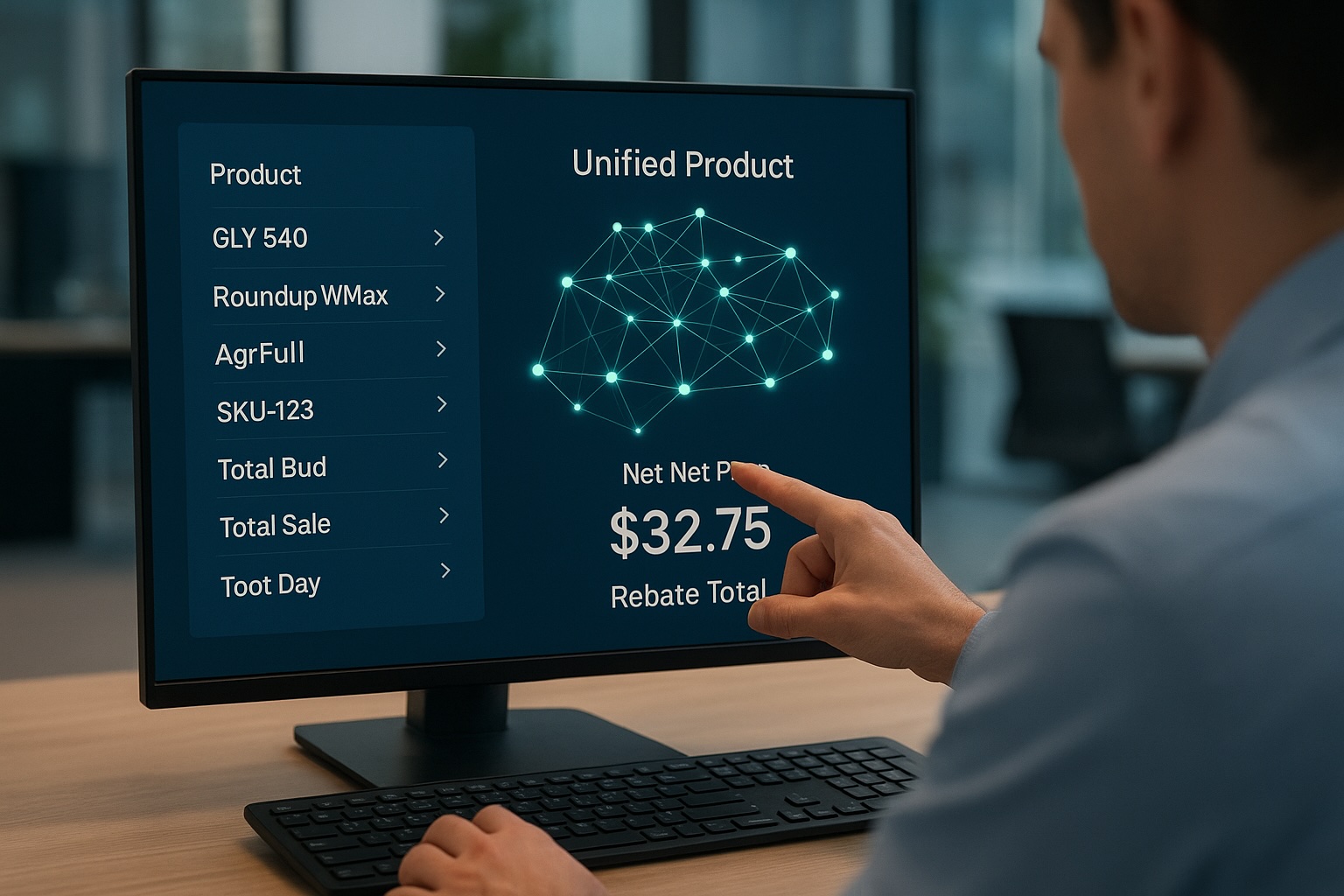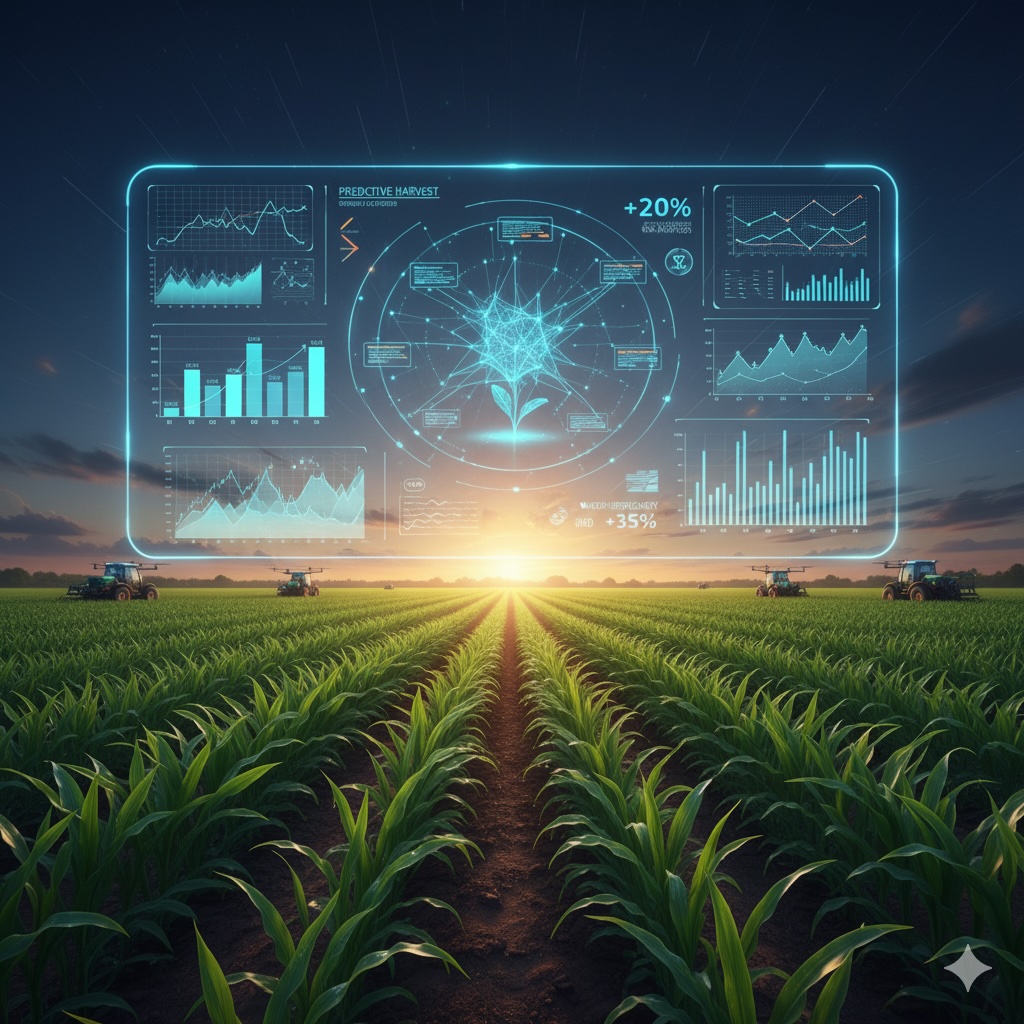
The Auditor’s Nightmare
We've spent a lot of time discussing the transformative power of AI in rebate management—from the speed of our Financial Document Reviewer (slashing costs from £60 to 10p) to the automated accuracy of our AI Rebate Data Cleaning Agent.
But when you present these results to a Chief Financial Officer, you often hit a wall. It’s not about the ROI; it’s about the risk. The moment an autonomous system makes a financial decision—like linking a sale to a high-value rebate tier—the CFO needs to answer one question: “How do I audit that?”
For any system dealing with financial data, accuracy is only half the battle. The other half is auditability. If your AI is a "black box" that cleans data and calculates complex rebates without logging its steps, you've created a strategic vulnerability. You can’t defend the number to a partner, and you certainly can’t explain it to the regulators.
The Problem: AI’s Three Deadly Sins in Finance
The CFO's hesitation is rooted in three key risks associated with un-audited AI:
- The "Hallucination" Risk: While less common in purpose-built analytical agents than in general-purpose Large Language Models (LLMs), the risk of the AI generating a plausible but incorrect link (e.g., mis-matching a product code) is unacceptable when millions in revenue are at stake.
- The Context Collapse: Rebate programs are complex, often requiring proof of a sale, a specific product, a location (GLN), and a time window. If the AI agent can't prove it considered all these factors, the calculation is worthless for audit purposes.
- The Static Problem: A static, unmonitored model will degrade over time. How does the CFO know the system that was 99% accurate in January is still 99% accurate in December, especially after a new product line is introduced?
The Solution: A Triple-Layered Trust Architecture
Building a reliable AI Rebate system means moving from simply getting the right answer to proving you got the right answer. This requires embedding three core principles into your architecture:
1. Comprehensive Data Lineage and Versioning
This is your full history. Every transaction, every transformation, must be recorded.
- Actionable Step: Capture and store all versions of the data at every stage of the processing pipeline.
- The Benefit: If an error is found—for example, if a new product variation leads to an incorrect unit conversion—you can "replay" the data through a retrained or corrected agent, ensuring data integrity is restored systematically.
- The Audit Trail: An auditor can trace any data point (e.g., the final rebate value) back through the pipeline to the raw incoming file, verifying every step.
2. Decision Logging: The Agent’s Rationale
This moves the AI from a black box to a transparent decision-maker.
- Actionable Step: Agents must log their decisions and the precise rationale behind them.
- The Agent’s Log: For a Data Cleaning Agent, the log shouldn't just say, "Corrected product name." It must record: “Fuzzy matched 'Roundup WMax' to canonical GTIN X-123. Confidence score: 95% based on semantic similarity of active ingredients."
- The Audit Trail: This creates transparent audit trails that explain why a particular sale was filtered out (e.g., "Identified as side-door sale based on Rule ID X") or how a unit of measure was converted. This is the core of Explainable AI (XAI).
3. Continuous Monitoring and the "Auditor Agent"
Trust isn't granted once; it must be continuously earned. Your system needs an AI watchdog.
- Actionable Step: Deploy specialized Auditor Agents that operate independently of the processing agents.
- The Auditor’s Role: This agent subscribes to the same Event Streams (like your EDA system uses) as the Rebate Optimization Agent, but its job is only to monitor. It uses machine learning to establish patterns of normal behavior and flag any transactions or data movements that deviate from established norms.
- The Audit Trail: This agent catches nuances that impact the overall "health" of the rebate process. For the CFO, this is proof of continuous internal controls, flagging errors or potential fraud proactively before they become a major financial issue.
The Business Advantage of Audited AI
When you deliver a system with this level of transparency, you move the conversation with your CFO from risk mitigation to strategic advantage:
- Increased IT Confidence: You transition from a brittle, point-to-point architecture to a flexible, modular system with robust data governance.
- Maximized Capture: The continuous auditing and clear lineage ensure you claim every penny you are owed, minimizing human-error disputes.
- Faster Adoption: By providing the necessary financial controls, you remove the biggest obstacle to deploying AI agents across other high-value, sensitive areas of the business.
The future of AI in Agri-FinTech is not just about intelligence; it’s about trust. By building a transparent, auditable architecture, you give the CFO the confidence to unlock the full revenue-generating power of your AI programs.

Everyone's talking about AI, and the pressure to "do something with AI" is immense. But as with any powerful new technology, the first step is often the most perilous. Where do you even begin?
It reminds me of the early days of Service-Oriented Architecture (SOA), and working with companies to deliver enterprise wide SOA. Firstly, we referred to the SOA tax - where the first project to start usually ended up paying for the infrastructure. This then lead to the temptation to re-architect the entire enterprise at once—a high-risk, high-cost endeavor that often failed. The smart-money approach was different. The key was to find a first project with clear business wins but a low-impact footprint, giving you room to learn and protection against failure. Once the first success happens more projects understand the benefits and also what guard rails need to be in place for the next wave of projects.
The same principle applies to AI. Your first project shouldn't be a "bet the company" moonshot. It should be a deliberate, strategic first step that builds momentum, demonstrates value, and teaches your organization how to use this new capability.
Based on my experience implementing several production AI solutions, here's a framework for picking that perfect first project.
1. Focus on Business Value, Not "AI for AI's Sake"
Don't start with the technology. Start with a real business problem. Every AI project must "directly address a clear business problem or opportunity". Look for the friction in your organization. Where are your people:
- Spending too much time on manual, repetitive tasks?
- Making decisions slowly because data is hard to analyze?
- Missing opportunities due to a lack of insight?
A great example: We identified that our lending team spent significant time and money—about £60 per document—having accountants manually review and standardize farm financial documents. The business problem was clear: this was slow (a 24-hour turnaround) and expensive.
The solution was an AI Financial Document Reviewer. The goal wasn't just "to use AI"; it was to solve this specific, costly bottleneck.
2. "Start Small, Think Big"
This is a core best practice: "Begin with a pilot project to validate the technology and demonstrate value before scaling".
"Starting small" means finding a process that is:
- Well-defined: You know the inputs and the desired outputs.
- Contained: It doesn't have a dozen complex dependencies across the entire business.
- Measurable: You can easily quantify the "before" and "after."
A great example: Our AI Call Analytics System. We didn't try to build a bot to replace our customer service agents. We started with a smaller, high-value problem: helping our compliance team. They had to manually review calls, which took about 6 minutes each. We built a system to transcribe, analyze, and categorize calls, flagging specific ones (like "Possible Vulnerable Customer" or "Potential Fraud").
This "small" project reduced a 6-minute review to 30 seconds, freeing up the compliance team to focus on high-risk calls. That's a massive win from a contained, well-defined project.
3. Build Your Safety Net: Use a Human-in-the-Loop
This is your single best strategy for "protection against failure." Your first AI project should augment your people, not replace them. Think of AI as a "co-pilot, not a replacement".
A "Human-in-the-Loop" (HIL) model is your "primary defence against AI hallucinations and errors". It works two ways:
- It provides quality control: A human expert reviews the AI's output, catching errors before they cause a problem. This is critical for building confidence in the system.
- It creates a feedback loop: These "corrections are fed back to the model to improve over time". The AI gets smarter with every correction.
For our Financial Document Reviewer, any missing values are passed to a user to check. Those corrections are then fed back into the model. This simple HIL loop reduced the cost from £60 to 10p and the time from 24 hours to 3 minutes, all while improving accuracy over time.
4. Remember: "Data is King"
There's an old saying: "Garbage in, garbage out." This "applies more than ever with AI". You can't have a successful AI project without a good data strategy. "Invest in data governance and quality".
Before you start, ask:
- Do we have the data we need?
- Is it clean and accessible?
- If not, is the project itself about cleaning the data?
Sometimes, the best first project is one that tackles the data problem head-on. We built an AI Rebate Data Cleaning Agent specifically because data was coming from multiple messy sources. We used machine learning to "automate the process of cleaning, linking and standardizing data". Critically, we could do this because we had "many years of manual processing and intervention" to use as training data.
5. Be Open to Unintended (and Valuable) Benefits
Finally, when you successfully solve a focused problem, you often find your new tool has other valuable applications.
When we built the AI Financial Document Reviewer, the primary goal was to speed up new loan applications. The unintended—and hugely valuable—benefit was that we could suddenly run this tool across all our existing loans. This allowed us to achieve an "automated annual review of [the] back book", something that wasn't feasible before.
These bonus wins are common. Solving one problem often shines a light on other areas that can be improved, building further momentum for your AI program.
Your "First Win" Checklist
Don't let the hype paralyze you. Find a project that ticks these boxes:
- [ ] Clear Business Value: Does it solve a real, measurable problem?
- [ ] Small & Contained: Is it a specific, well-defined process?
- [ ] Human-in-the-Loop: Does it augment an employee and have a feedback loop?
- [ ] Data-Ready: Do you have the clean (or cleanable) data to power it?
- [ ] Open to Opportunity: Are you ready to spot and leverage the unintended benefits?
If you can check all of these, you haven't just found an AI project. You've found your first win.

In the agriculture business, the most important number isn't just the list price; it's the "net net price." This final, true cost is a complex mix of list price, local discounts, and—most critically—supplier rebate programs.
Maximizing these rebates is a core business driver. But it's a painful, manual process. Why? Because the complex rebate programs from manufacturers are almost impossible to reconcile against your sales data. This is especially difficult in the short windows when your sales teams are selling the products, they are usually flying blind, hoping that they are selling the right product, at a profit.
This isn't just an accounting headache. It's a strategic failure.
The Problem: You Can'T Sell What You Can't Identify
The core of the issue is product identity. Your inventory system has "GLYPHOSATE 540 20L", your sales team types in "Roundup WMax", and a farm management system might just say "Gen Gly 540".
This data chaos creates critical, costly questions that businesses can't answer:
- How can a salesperson determine which product to sell right now to maximize their rebate position if they can't be 100% sure which products apply?
- How can a manager calculate the true "net net price" of a sale when the rebate eligibility is ambiguous?
- How can you find a functionally equivalent alternative (e.g., "Credit Xtreme" vs. "Roundup") if a preferred product is out of stock, and know how that switch impacts the rebate?
The answer is: they can't. Not reliably. Without a system that can confidently link "Roundup WMax" to "GLYPHOSATE 540 20L", you're leaving money on the table.
A Smarter Solution: A Layered, Hybrid Approach
To solve this, we've developed a pragmatic and powerful system. We've learned that no single technique works. A simple name-matcher fails on different brands, and an AI-only approach can be a "black box."
Our solution is a hybrid, combining several intelligent techniques to build a complete, reliable picture.
- Component-Level Matching: First, we look at the "hard facts"—the obvious clues. We compare known characteristics like active ingredient, concentration, manufacturer, and SKU. This instantly connects many products and provides a strong, logical baseline.
- Understanding Semantic Context: This is where we get smart. We use advanced AI to analyze the meaning of a product's profile, not just its text. This AI understands that "Roundup WeatherMax" and "Credit Xtreme" are semantically very similar (as both are "Glyphosates") and are far more related to each other than to a fungicide, even if their names look nothing alike. This is the key to finding functional alternatives.
- Network-Based Resolution: We don't just compare two products in isolation. We map the entire network of relationships. Every product from every source (sales, inventory, ERP) is loaded into a graph. Every match we find—from a strong SKU match to a weaker semantic link—becomes a piece of evidence. We then run powerful clustering algorithms over this "web" of evidence. This lets strong, confident links (like a SKU match) reinforce and validate weaker clues (like a partial name match) across the entire dataset, automatically grouping all product variations into a single, unified "master product."
The Business Payoff: From Data Chaos to Commercial Clarity
This hybrid system moves product identification from a manual, error-prone chore to an automated, strategic advantage.
- Dynamic Rebate & Pricing Optimization:
By unifying all product names, you can finally connect sales orders to rebate programs in real-time. A salesperson can see the true "net net price" of a product before the sale, and be guided to the product that offers the best margin for both the farmer and the business.
- Accurate Market Share & Alternative Analysis:
The system allows you to stop thinking in terms of "Roundup" sales and start thinking in terms of the total "Glyphosinate 540" market. You can see your true market share for a specific active ingredient, identify functional alternatives from any supplier, and make smarter purchasing decisions.
- A Unified Supply Chain:
Your inventory finally makes sense. You get a single view of your true stock levels for every functional product, not just every SKU, reducing confusion and optimizing your supply chain.
The take-home message is simple: you can't have a modern, data-driven sales strategy without clean, reliable data. By combining several smart techniques, we can clean up the product-naming chaos, unlock the true net price, and turn your messy data into your most powerful strategic asset.

In this blog series, we've journeyed from the foundational importance of clean data to the practical application of an AI co-pilot in the field. We've established how to create a single, trustworthy source of truth from a chaotic mix of sales data. Now, we can ask the most powerful question: "What's next?"
The answer lies in shifting our perspective from the past to the future. With a clean, historical dataset as our fuel, we can build a Predictive Rebate Engine. This moves rebate management from a reactive accounting function to a proactive, strategic tool that can forecast outcomes, simulate new program ideas, and directly drive sales growth in the highly competitive agriculture market.
From Reporting to Forecasting: Seeing Around the Corner
For years, rebate reports have told us what has happened. A predictive AI engine tells us what is likely to happen, providing actionable insights that can change the outcome of a selling season.
1. Tier Propensity Modeling (The Proactive "Nudge")
In the world of crop protection and seed sales, hitting volume targets is critical. A predictive model can identify when a retailer is close to hitting a valuable rebate tier from a manufacturer and suggest actions to get them over the line.
- Scenario: An AI model analyzes a retailer's aggregate sales of a specific fungicide from a manufacturer. It sees the retailer is only 500 litres short of hitting a significant end-of-quarter volume rebate tier, with three weeks remaining.
- Actionable Insight: The system can flag this for the retailer's sales manager. The manager can then launch a targeted mini-campaign. The AI could even identify specific farmers who have a high propensity to purchase that fungicide but haven't bought it recently. The retailer’s agronomists can then contact these farmers with a compelling offer: "We're running a great special on Fungicide X for the next couple of weeks. It's an ideal time to stock up for your final application." This helps the farmer get a good price, and it strategically pushes the retailer over the threshold to secure a much larger rebate from the manufacturer.
2. Rebate Liability Forecasting (Financial Clarity for Manufacturers)
For a seed or crop protection manufacturer, forecasting the total financial liability from rebate programs is a massive challenge. It's a significant variable that can impact quarterly and annual financial planning.
- Scenario: A manufacturer needs to forecast its end-of-year rebate payout for a new soybean seed variety.
- Actionable Insight: A predictive AI engine can analyze early-season sales data and compare it to historical adoption rates of similar products. It can even incorporate external variables, like long-range weather forecasts (e.g., a forecast for a dry summer might suppress fungicide sales but have less impact on a drought-resistant seed). The result is a far more accurate financial forecast, giving the finance department the clarity it needs for precise budgeting.
The Strategic Game-Changer: A "What-If" Sandbox for Rebate Programs
This is where a predictive engine delivers the most profound value: it allows you to optimize the design of the rebate programs themselves. By creating a digital twin of your sales ecosystem, you can test new ideas in a virtual environment before launching them in the real world.
This allows you to answer critical strategic questions with data, not just intuition:
- Simulating Threshold Adjustments: "What would be the impact on sales volume and total payout if we lowered the purchase threshold for our premium corn seed rebate by 10%?" The AI can simulate the likely outcome, predicting a 15% increase in adoption among mid-size farms, leading to a 5% increase in net profit after accounting for the higher rebate payout.
- Modeling Program Complexity: "What if we introduce a 'product stacking' bonus? If a farmer buys both our new herbicide and our recommended seed variety together, they get an extra 2% back." The AI can model the likely uplift in sales for both products based on past purchasing affinities, giving you a clear ROI projection for the new incentive.
- Testing Early-Pay Incentives: "If we offer an additional 1% rebate for orders of crop protection products placed before March 1st, how would that shift our sales distribution and impact our cash flow and warehouse logistics?"
The Business Impact: A New Strategic Lever for Growth
By embracing a predictive approach, rebate management is fundamentally transformed. It ceases to be a simple accounting mechanism and becomes a dynamic, strategic lever for the entire business.
- For Sales: It provides agronomists with targeted, data-driven reasons to engage with farmers, strengthening relationships and driving incremental sales.
- For Finance: It delivers accurate liability forecasts, removing uncertainty from the budgeting process.
- For Marketing: It offers a powerful tool for designing and validating smarter, more effective incentive programs that achieve specific business goals—whether it's increasing market share for a new product or encouraging brand loyalty.
Ultimately, a predictive rebate engine allows businesses in the agricultural sector to stop looking in the rearview mirror and start making strategic decisions based on a clear view of the road ahead.

In our last post, we explored the unsung hero of our AI ecosystem: the Data Cleaning Agent. But once you have that pristine, reliable data, how do you get it into the hands of the people who need it most, at the exact moment they need it?
For our customers—the agricultural retailers and suppliers—this front line is often a farmer's field. Their sales teams and agronomists need instant, accurate answers to complex questions to be successful. This is why we built "Earthling"—the AI Rebate Bot I introduced at the AI(Live) conference.
This post shares our journey in building Earthling, focusing on the architecture that keeps our customers' data private, the security measures essential for a client-facing tool, and the incredible value of delivering AI-powered insights to the true point of impact.
The Architecture: Privacy and Security-First with RAG and Tools
When you build an AI tool for your customers, the top priority is data security and privacy. A retailer cannot have their sensitive sales data absorbed into a public model, nor can they risk one client seeing another's information.
This is why our architecture is built on Retrieval-Augmented Generation (RAG) and Tools. This model ensures data stays private and secure.
- The LLM is the Reasoning Engine, Not the Database: We use the powerful LLM for what it does best: understanding language, reasoning, and constructing human-like answers. Crucially, it does not store our customers' internal data.
- RAG as the Secure, Multi-Tenant Librarian: RAG connects the LLM to our secure, segregated




